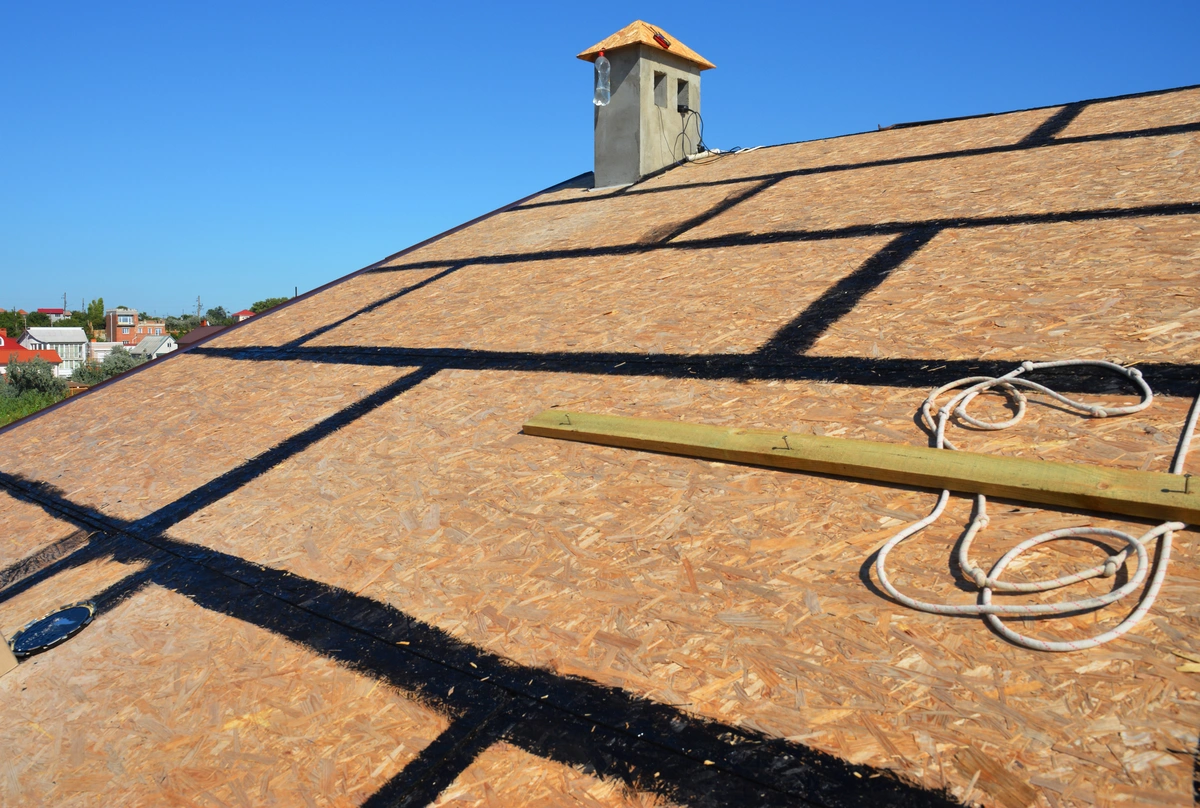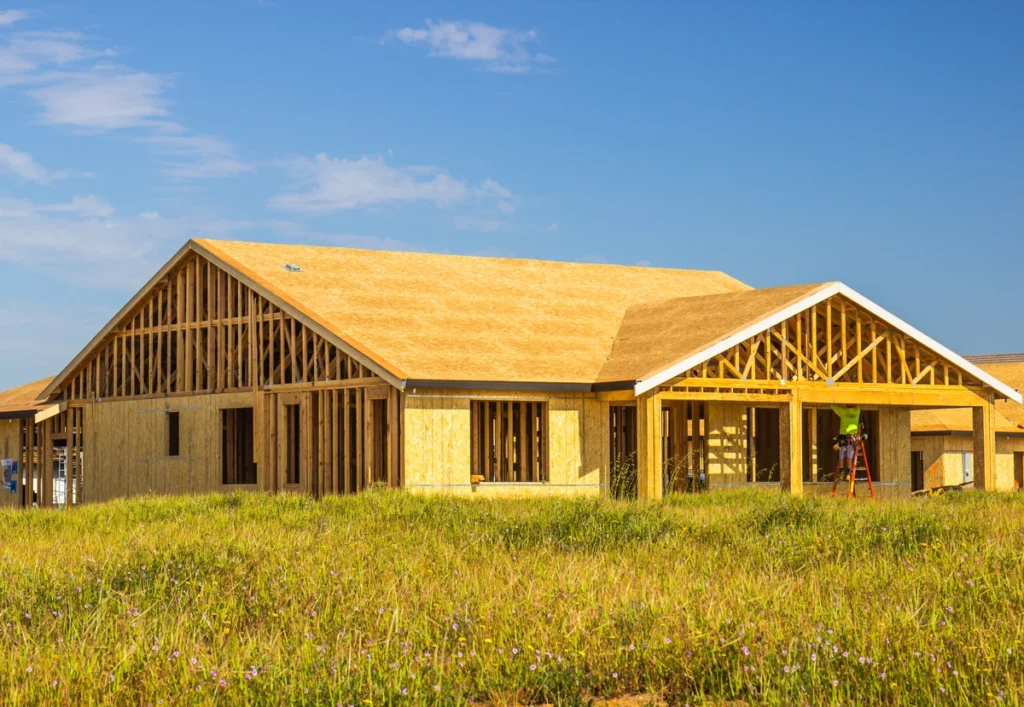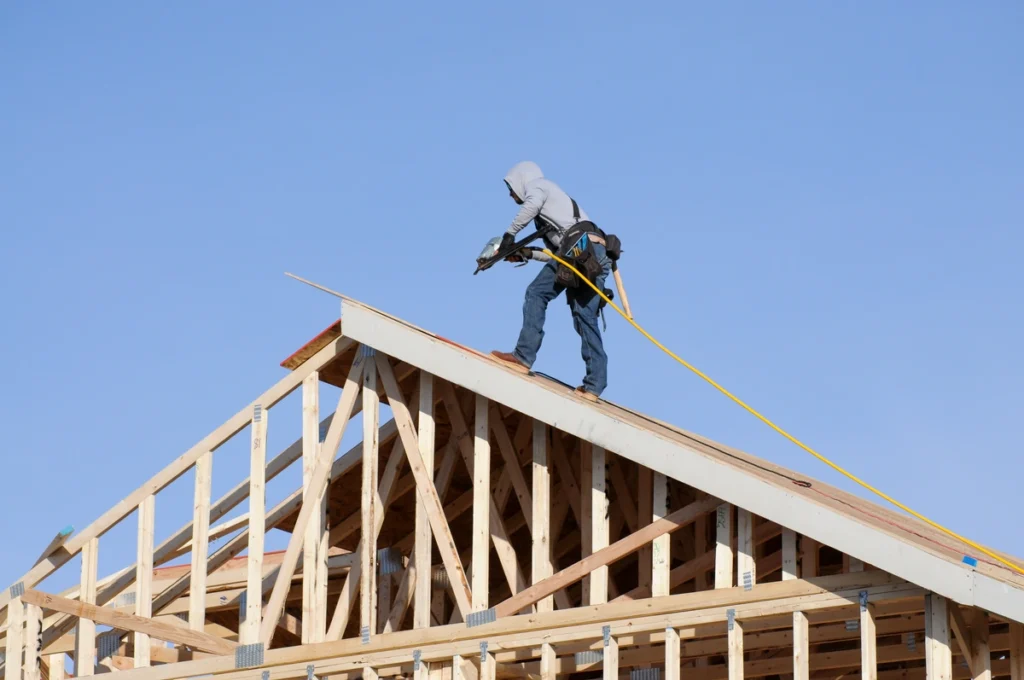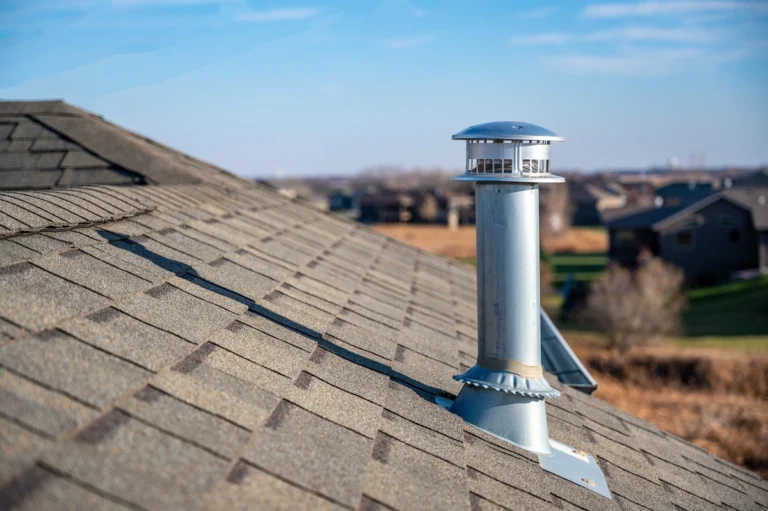
When it comes to your home’s roof, what’s beneath the shingles matters just as much as the shingles themselves. Roof sheathing is a critical component of your roofing system, and its thickness can impact the overall performance and longevity of your roof. In this homeowner’s guide, we’ll explore everything you should know about roof sheathing thickness, including its importance, options, and factors to consider. Let’s dive into the world of roof sheathing!
Inside this blog:
- A brief overview of roof sheathing
- 4 common roof sheathing thickness options
- Factors that influence roof sheathing thickness
Keep reading to become an expert on roof sheathing thickness!
Understanding Roof Sheathing
Before we delve into roof sheathing thickness, let’s understand what roof sheathing is and its role in your roofing system:
What Is Roof Sheathing?

Roof sheathing, often referred to as roof decking, is the layer of material that covers the rafters or trusses of your roof structure. It provides a solid base for the installation of roofing materials, such as shingles, tiles, or metal panels.
Role of Roof Sheathing
Roof sheathing serves several essential functions:
- Provides structural support for the roof.
- Distributes the load from the roofing materials evenly.
- Helps prevent sagging and warping of the roof structure.
- Acts as a secondary barrier against water infiltration.
- Aids in maintaining the roof’s shape and stability.
Common Materials
Roof sheathing can be made from various materials, including plywood, oriented strand board (OSB), and, less commonly, solid wood boards. The choice of material depends on factors such as cost, climate, and local building codes.
The Importance of Roof Sheathing Thickness 🛠️
Roof sheathing thickness plays a crucial role in the overall durability and performance of your roof. Here’s why it matters:
- Structural Integrity: Adequate thickness ensures that the roof sheathing can support the weight of roofing materials, snow, and any potential loads, such as maintenance workers or equipment, safeguarding the long-term stability of your roof.
- Wind Resistance: Thicker sheathing provides better resistance against strong winds, preventing wind uplift and potential damage during storms, giving you peace of mind during severe weather.
- Moisture Protection: Properly thick sheathing serves as an effective barrier against moisture infiltration, reducing the risk of leaks and water damage, which can save you from costly repairs down the line.
- Durability: Thicker sheathing is less prone to warping and sagging over time, which can extend the lifespan of your roof, ultimately preserving your home’s structural integrity.
- Insulation: In some cases, thicker sheathing may provide additional insulation properties, helping regulate indoor temperatures and improve energy efficiency, leading to potential savings on heating and cooling costs.
4 Common Roof Sheathing Thickness Options 📏

Roof sheathing is available in various thicknesses, typically measured in eighths of an inch (e.g., 7/16″, 1/2″, 5/8″). The most common roof sheathing thickness options for residential applications include:
1. 7/16″ Thickness
This is the minimum thickness commonly used for roof sheathing. While it meets building code requirements in many areas, it may not offer the same structural strength and durability as thicker options.
2. 1/2″ Thickness
1/2″ sheathing is a popular choice for residential roofing projects. It provides a good balance between cost and performance and is suitable for most climates.
3. 5/8″ Thickness
Thicker at 5/8″, this sheathing option offers enhanced strength and durability. It is often chosen for areas prone to high winds or heavy snow loads.
4. 3/4″ Thickness
3/4″ sheathing is even more robust and is typically used in regions with extreme weather conditions or for specific architectural designs requiring additional support.
Factors Influencing Roof Sheathing Thickness
When determining the appropriate roof sheathing thickness for your project, consider the following factors:
- Local Building Codes: Check your local building codes and regulations, as they may specify minimum requirements for roof sheathing thickness based on your region’s climate and potential snow loads.
- Climate: Consider your area’s climate, including factors like snowfall, rainfall, wind, and temperature fluctuations. Regions with harsher conditions may benefit from thicker sheathing.
- Roof Design: The design of your roof, including its slope and complexity, can influence the necessary sheathing thickness. Steeper roofs may require thicker sheathing for stability.
- Roofing Material: The type of roofing material you plan to use can affect sheathing requirements. Heavier materials like slate or clay tiles may necessitate thicker sheathing.
- Budget: Your budget will also play a role in determining the sheathing thickness. While thicker sheathing provides benefits, it comes at a higher cost.
The Role of Roof Sheathing Underlayment
In addition to the thickness of the roof sheathing, it’s essential to consider the use of a roofing underlayment. The underlayment is a secondary layer installed between the sheathing and the roofing material. It provides an extra barrier against moisture and adds an additional level of protection.
Common types of underlayment include:
- Asphalt-saturated felt: This traditional underlayment is water-resistant and helps protect against moisture infiltration.
- Synthetic underlayment: Synthetic materials offer enhanced resistance to moisture, are lighter, and may provide better tear resistance compared to traditional felt.
- Ice and water shield: This self-adhering membrane is used in vulnerable areas of the roof, such as eaves and valleys, to provide added protection against ice dams and water intrusion.
A Strong Roof Starts With Roof Sheathing Thickness
Roof sheathing thickness is a critical consideration for your roofing project. It plays a vital role in the structural integrity, durability, and overall performance of your roof. When choosing the right thickness, be sure to factor in your local building codes, climate, roof design, roofing material, and budget. A well-informed decision on roof sheathing thickness can help ensure that your roof stands up to the elements and provides reliable protection for your home for years to come.
Contact our expert team of roofers at Shingle and Metal Roofs today and experience speedy turnaround times and unmatched craftsmanship on your home. We’re excited to hear your questions and wants for your next roofing project!






